Hooray, hooray, it’s my first avocado harvest! Yep, that’s avocado harvest, singular. It was delicious – not quite the bushels I planned to give away to family and friends, but at least Geoff and I enjoyed half each as a mid afternoon snack… a small snack, as the avocado was not very big! Here it is:
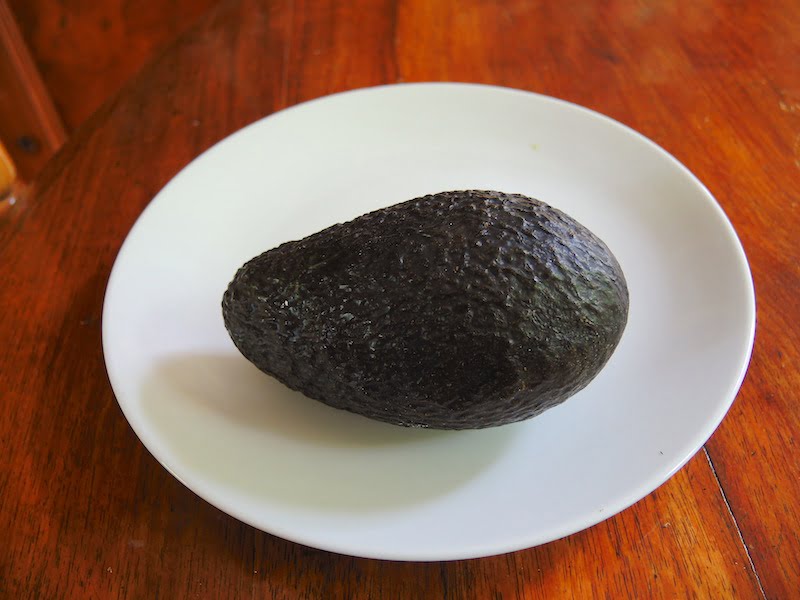
Our very singular avocado
It’s entirely my fault. There’s a long-established avocado plantation some twenty kilometres to the south, and a friend has a variety of decades-old trees in the next valley with the exact same aspect and soil so, much as I’d like to blame the microclimate, I can’t.
Unfortunately, I know exactly why my Hass and Ettinger aren’t fruiting. One had died in the front garden and I replaced it before transplanting, but they weren’t labelled. So now I have a Hass and a Hass, instead of an A- and a B-type pollinator (google avocado pollination to see why this matters).
Sure, you’ll read that Hass is self-fertile to some degree. Well actually no, not in my garden it ain’t, unless an annual harvest of one fruit as compared to the touted 200 per tree is acceptable! But I’m not replacing any just yet: a friend is going to topwork one tree in spring.
I gathered a small bowlful of macadamias from two trees. Not many, but it’s the first time they’ve flowered so that wasn’t not too bad, and harvests will improve as the trees mature. The nuts are delicious, but there is one small problem, literally:
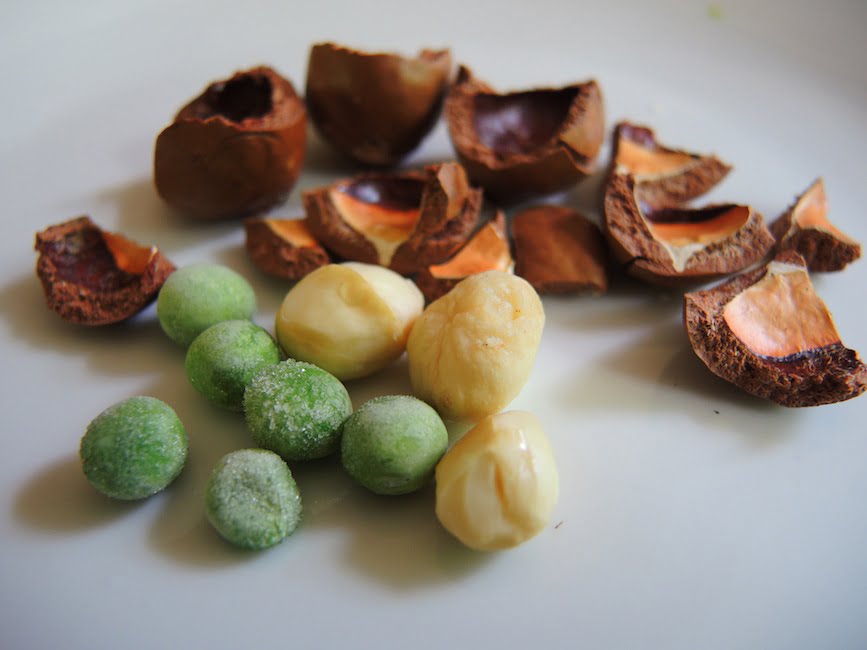
Macadamias the size of baby peas
That’s three shelled macadamias, with garden peas for comparison. BABY peas! All is not lost, however: more water and fertiliser should improve nut size. I hope!
Almonds aren’t recommended for the Adelaide Hills but hey, let’s ignore decades of professional grower experience! I planted two dwarf All-in-One and another espaliered. They looked promising on the tree:
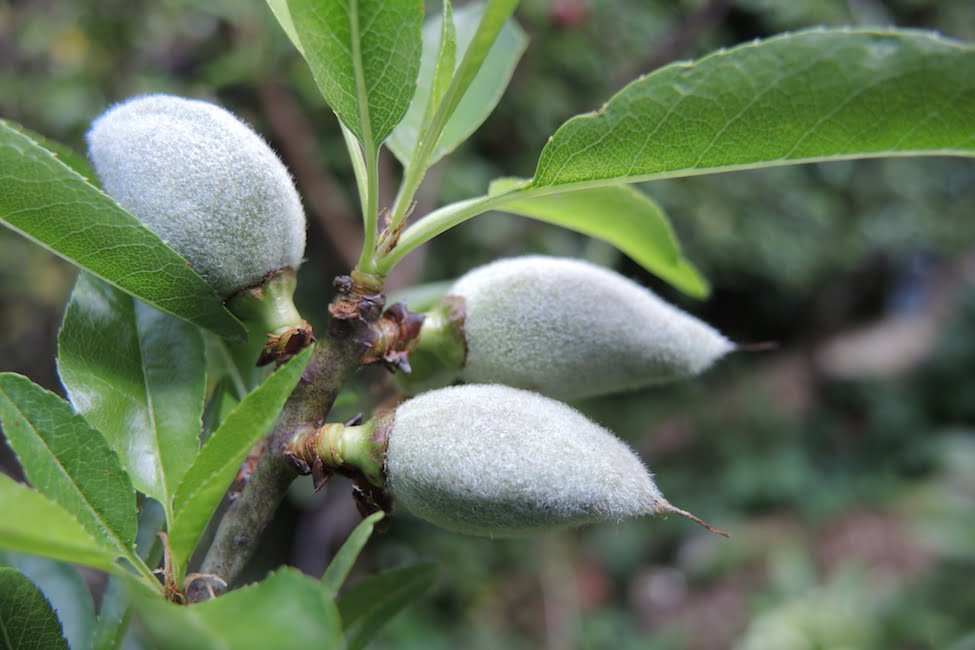
Almonds looking promising
And here is my first harvest from them:
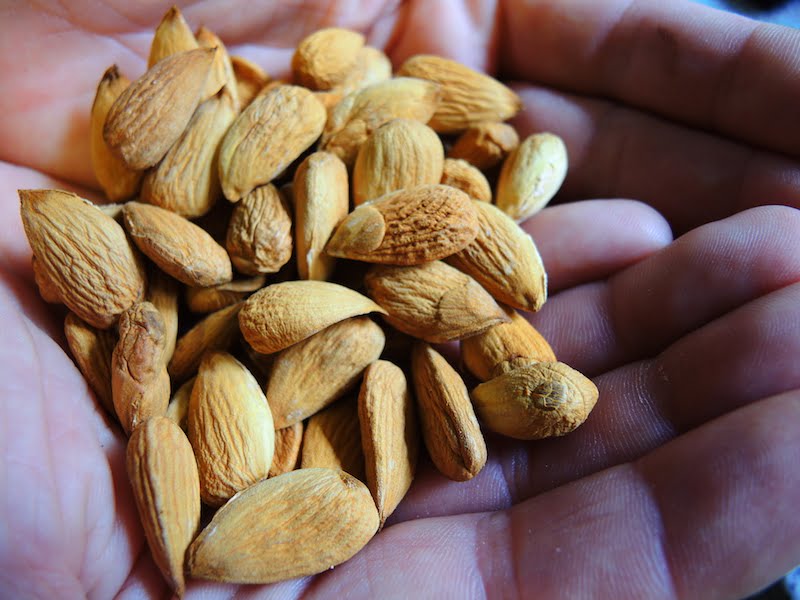
The total almond harvest – a double handfull
Many of the nuts were twins – two small ones inside each shell. They tasted great, however, and it’s early days; seasonal variation will likely be significant (better in warm years, worse in cool ones). I’m an eternal optimist: a warmer climate overall may well change previous geographical suitability limits and prove the professional growers wrong.
Here’s another VERY long shot:
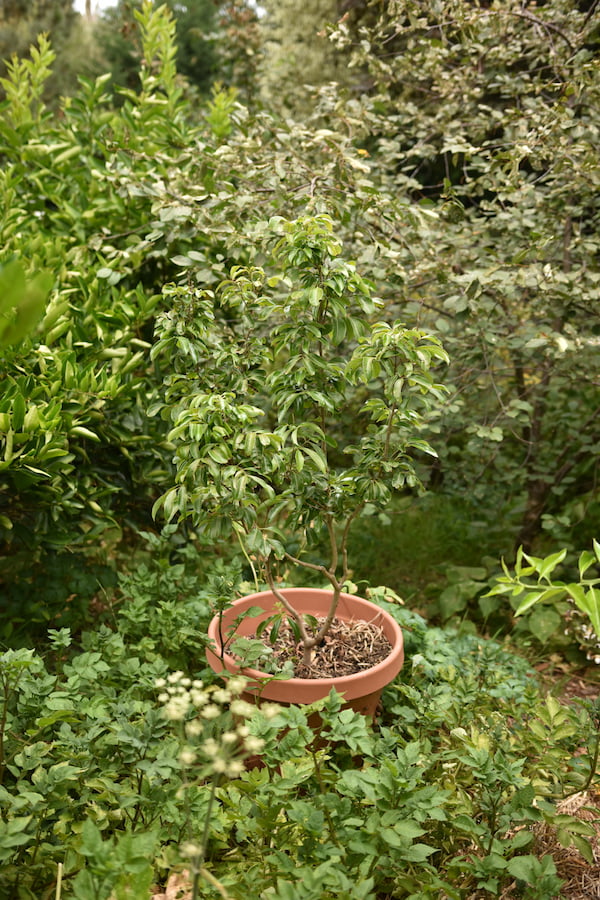
My lychee in a pot
Lychees need humid summers and plenty of sun but loathe hot northerly winds. Nor do they like cold, wet winters and frost. Mine is in a pot in the most sheltered spot in the garden. It is growing – slowly – and flowered well this spring; happily, there are two tiny fruit forming:
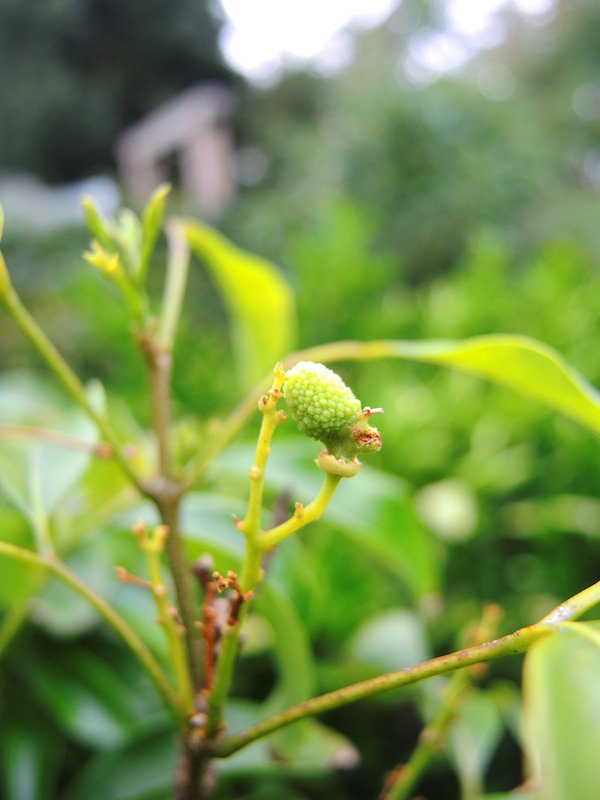
Tiny fruit forming on the lychee
At three years old, the tree is probably still too young to produce, so I won’t give up yet, not least because lychees are one of my all-time favourite fruits. It’s also very possible that the fruit will begin to ripen just as the chills of winter arrive, and rot on the tree. But we will see: perhaps Geoff and I will yet eat a lychee (ahem, singular) with icecream this autumn! Longans apparently tolerate a wider microclimate and would have been a better bet, but this useful fact I discovered too late. I’ll be patient, but not as patient as one Adelaide Hills gardener whose hazelnuts finally cropped… after thirty years!
Here’s my white sapote:
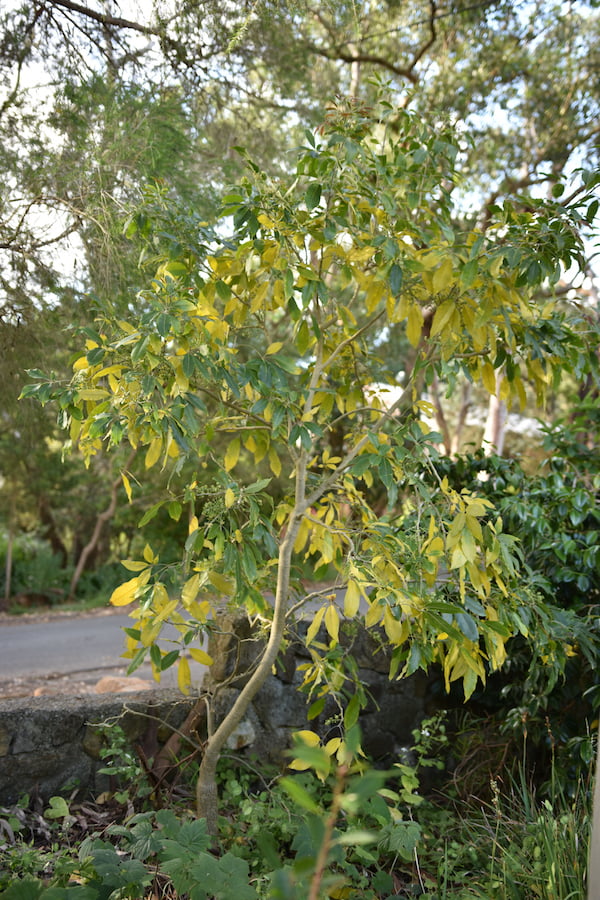
My white sapote looking sad in its summer leaf drop
The tree looks unhealthy but it’s just in its perfectly normal annual abscission phase (dropping its old leaves and forming new ones). Like Hass avocado, ‘Ortega’ white sapote is meant to be self-fertile but, like Hass avocado, it ain’t in my garden: it flowers well and forms a few pea-sized fruit which invariably drop off:
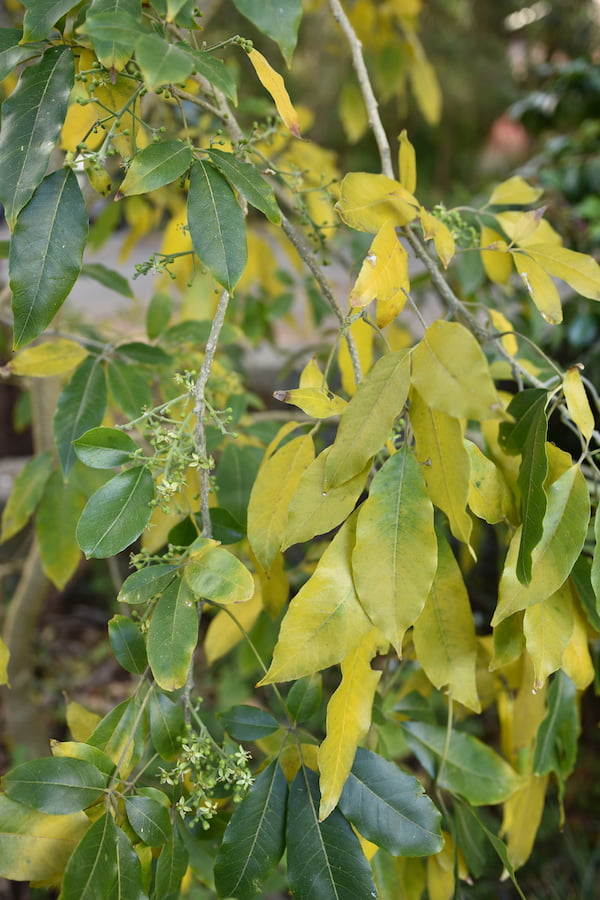
White sapote with tiny fruit that soon drop off
But why give up? I’m going double or nothing, and buying a cross-pollinator!
However, definitely time to ditch the peaches and nectarines:
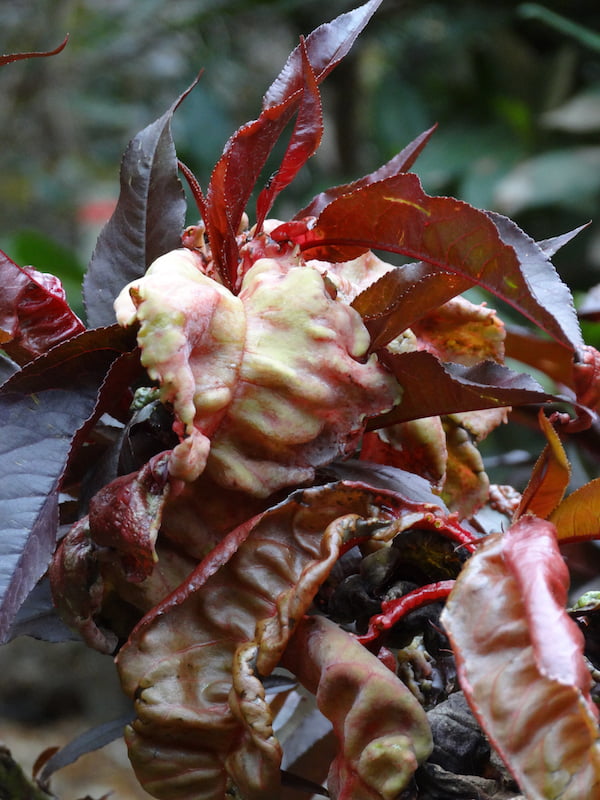
Curly leaf on peaches and nectarines is too hard to control without heavy-duty fungicides
My microclimate is just too sheltered and curly leaf is impossible to control even with numerous carefully-timed sprays of lime sulfur and/or copper; a regular spraying regime of more potent fungicides is not for my garden. So they’ll be ripped out this winter and replaced with plums.
The dwarf apricot is already producing (a grand total of four fruit this year!) even though, like almonds, it’s not a tree that’s recommended for my local area.
The jaboticaba is in dappled shade in the ground. Here it is in the pot four years ago just before planting in that spot:
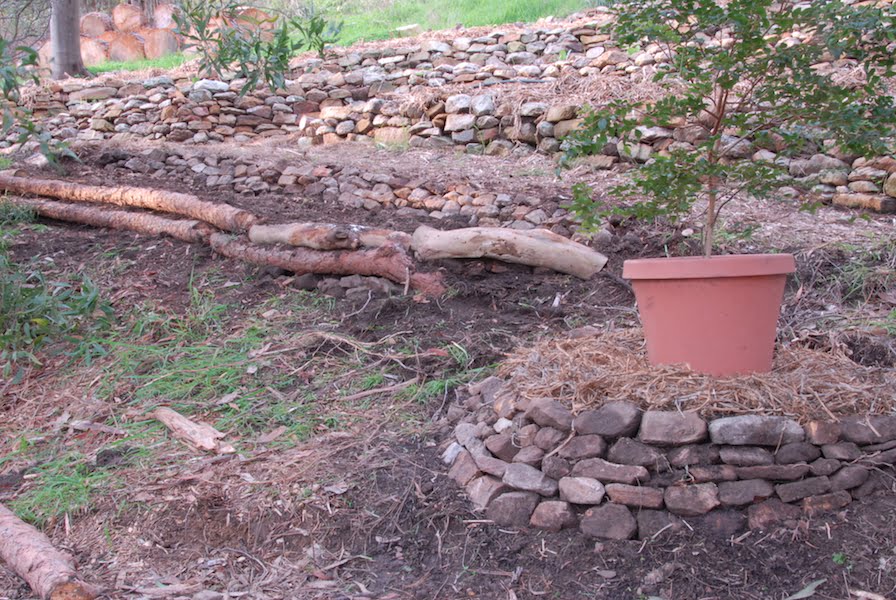
Jaboticaba four years ago, ready to plant out
It has root competition from surrounding acacias and, unsurprisingly, is only limping along. It grew successfully as a potted specimen for several years before being planted out, at which point it sulked. If it doesn’t get any bigger this season, I’ll repot it, and continue to grow it that way.
Other more climate appropriate plants are going gangbusters: raspberries, blueberries, bramblefruit, red and white currants, cherries, jostaberry, figs, persimmon, tamarillo, citrus, cape gooseberry and numerous others are pretty much effortless here.
Poor cropping is usually due to pollination (usually fixable), fertilising or watering regime (ditto), or climatic factors (not so fixable). Once you know the cause, you can decide whether to persevere. But why even bother with those tricky plants?
As any even slightly fanatical gardener knows, we bother because it’s challenging, and therefore fun. We learn more about our plants and our limits with every success and failure and besides, one win somehow outweighs multiple losses. I’m even toying with the idea of hazelnuts!
PS. But fewer losses are even better, so if you have any tips to help my lychee, macadamias and jaboticaba, please do tell!
